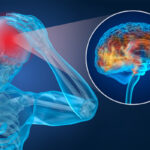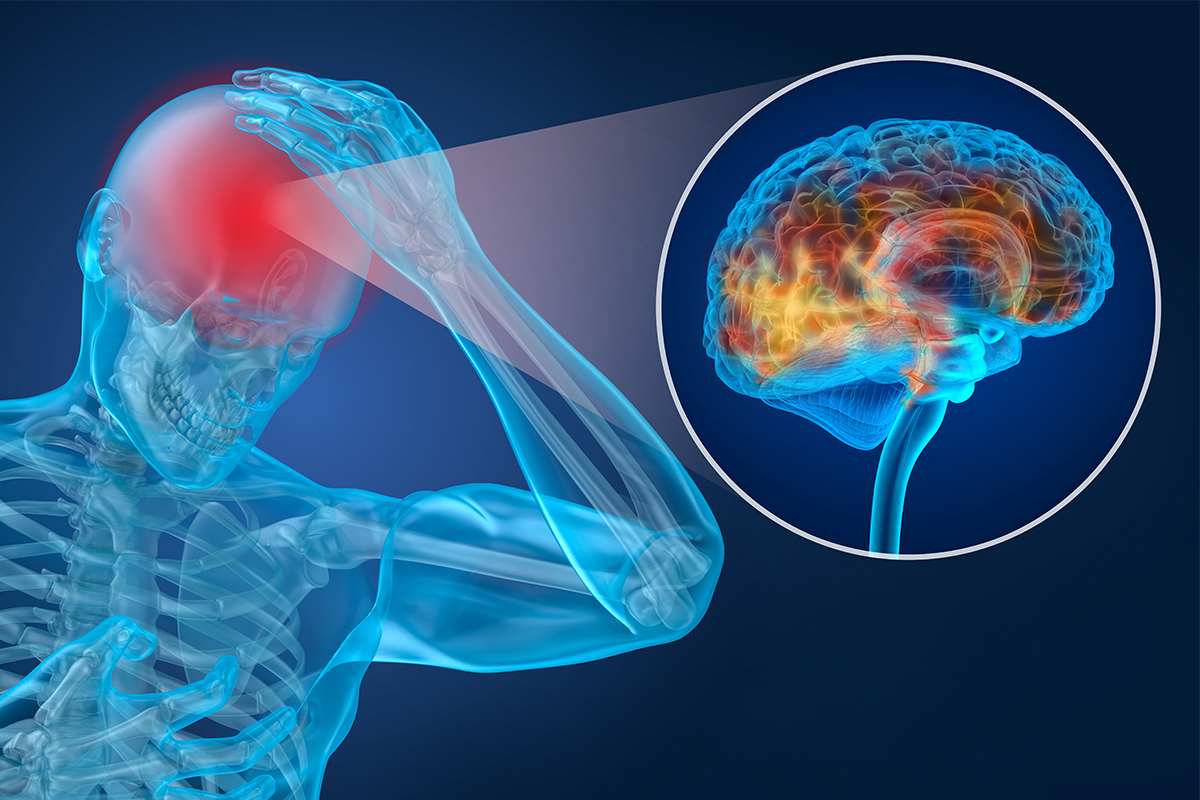Brain contusions are one of the most severe forms of brain damage and are closely related to death and disability. However, there is hope for improved outcomes when a quick diagnosis, care, and treatment are provided.
Here, we look at brain contusions and their role as traumatic brain injuries.
What is a Brain Contusion?
A contusion is a bruise causing bleeding and swelling inside of the brain.
They commonly occur with severe head injuries such as skull fractures but can also be related to blood clots or spontaneous bleeding inside the brain itself related to intraparenchymal hemorrhage.
Other non-traumatic causes include high blood pressure in older adults, bleeding disorders and some blood thinning or illicit drugs.
Intracranial hematoma (ICH) or blood clots in or around the brain are another form of contusion and are potentially life-threatening injuries that include:
- Epidural hematoma occurs when a blood clot forms underneath the skull but on top of the dura, usually caused by a tear related to a skull fracture.
- Subdural hematoma occurs when a blood clot forms underneath the skull and underneath the dura but outside of the brain. It is usually caused by a tear or cut on the brain, not necessarily related to a skull fracture.
- Contusion or intracerebral hematoma is a bruise on the brain itself, causing bleeding and swelling inside of the brain as a result of fractures or blood clots.
- Diffuse axonal injury (DAI) is caused by violent shaking, such as shaken baby syndrome or car accidents.
Possible Neurological Complications
The neurological complications of brain injuries impact a patient’s quality of life.
Some common complications can include spatial neglect, movement disorders, perception problems, dizziness, balance disorders, sleep disorders, and fatigue. In the longer-term, brain contusions also increase the risk for degenerative brain diseases and dementia.
Other possible neurological complications include:
Post-traumatic Seizures (post-traumatic epilepsy)
- Bilateral contusions increase the risk of post-traumatic seizures in moderate or severe traumatic brain injury. They can be confined to the initial stages of the injury or appear years later.
Cranial Nerve Disorders
- This can include loss of smell, taste, or vision, as well as double vision, dizziness, difficulty swallowing and hearing issues.
Visual Dysfunction
Visual dysfunctions span a wide variety of symptoms, including:
- Blurred vision
- Sensitivity to light
- Reading difficulty
- Headaches when completing visual tasks
- Reduction or loss of visual field
- Difficulties with eye movements
- Gaze stabilization deficits
Neuro-sensory Deficit
This can impact an individual in different ways, including:
- Ringing in the ears
- Difficulty recognizing objects
- Blind spots or double vision
- Bitter taste
- A bad smell or difficulty smelling
- Skin tingling, itching, numbness, or pain
Behavioral & Emotional
These issues can have long-lasting impact on the individual’s life and can include:
- Agitation
- Difficulty with self-control
- Lack of awareness of abilities
- Risky behavior
- Verbal or physical outbursts
- Alcohol misuse
- Anxiety and depression
- Mood swings
- Irritability
- Anger
- Lack of empathy for others
Cognitive Decline
Cognitive decline can impact information processing, communication, movement execution and balance skills, including:
- Memory
- Learning new skills and information
- Reasoning and judgment
- Attention and concentration
- Executive functioning problems
- Problem-solving
- Multitasking and organization
- Planning
- Decision making
- Beginning or completing tasks
Communication Deficits
Potential issues with communication can include:
- Understanding speech or writing
- The action of speaking or writing
- Organizing thoughts and ideas
- Following and participating in conversations, taking turns or topic selection
- Understanding subtle differences in meaning, nonverbal signals or reading social cues
- Forming words
Brain Swelling Management
Hydrocephalus or brain swelling impacts 70% of traumatic brain injuries. Swelling occurs when cerebrospinal fluid builds up in the cerebral ventricles, leading to increased pressure and swelling. Brain swelling management helps provide enough blood and oxygen to the brain while treating the underlying causes. Treatment might include:
- Hyperbaric oxygen therapy
- IV fluids
- Lowering body temperature
- Medication
- Draining fluids (Ventriculostomy)
- Surgery such as removing a part of the skill or repairing the source of the swelling, such as a vein
Brain Contusion Recovery
Recovery from a brain contusion can involve several therapies and treatments depending on the severity of the damage, such as:
- Physical therapy
- Occupational therapy
- Speech therapy
- Psychiatric care, such as Cognitive Rehabilitation and Psychotherapy
- Other treatments, such as Neurofeedback to stimulate healing and improve dysregulation in brain activity
- Social support
The goal is to assist patients to recover brain function while providing support and coping strategies for mental and emotional challenges. It can also reduce the risk of complications to improve recovery outcomes.
The traumatic injury impact on an individual varies based on the severity of the contusion. However, with proper treatment, patients can see improved outcomes to enjoy the highest possible quality of life.
The Chicago Mind Solutions Difference
Chicago Mind Solutions works with individuals, offering neuropsychological testing and non-invasive treatment for many mental health conditions. For more information about our treatments and teletherapy options, please contact us at (224) 723-5050 or email info@chicagomindsolutions.com.






